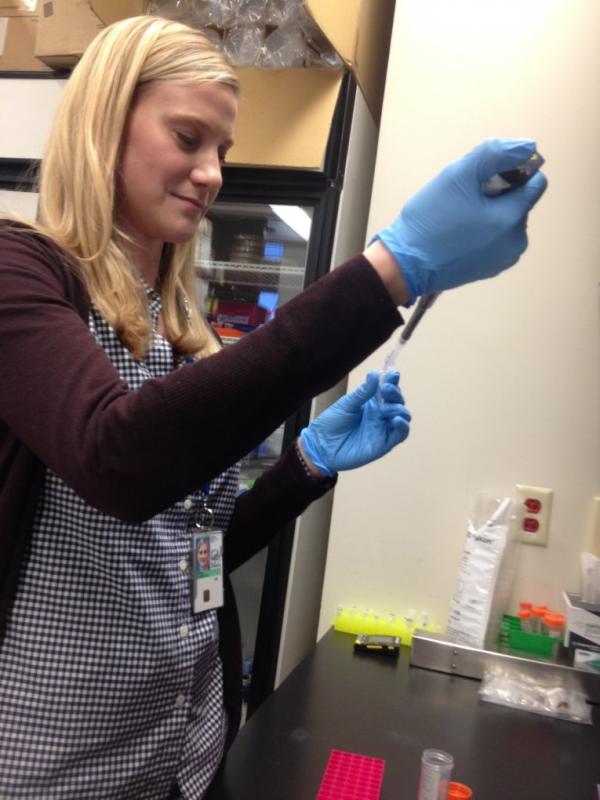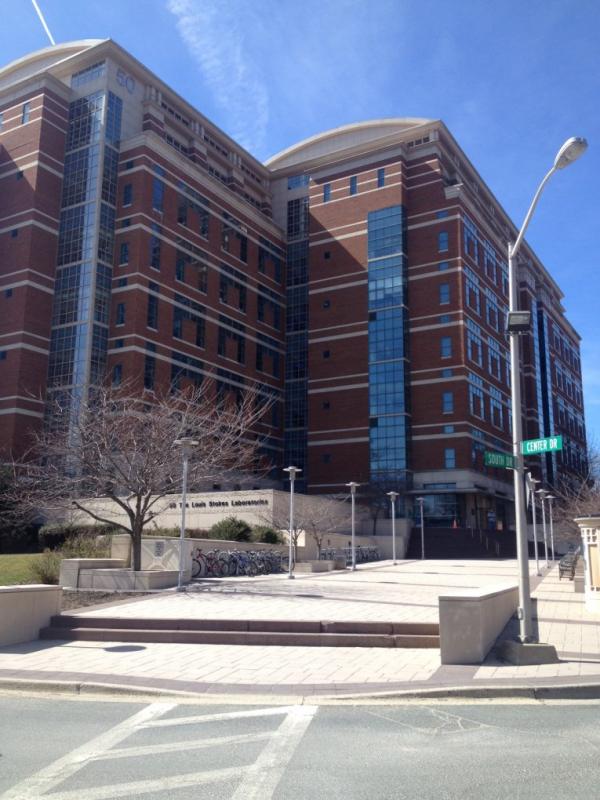Finding My Way to NIH’s Undiagnosed Diseases Program

Here I am at the bench in the UDP lab, mixing reagents.
Choosing to study biology in college was an easy decision for me. Deciding what I would do after college was a little more difficult. Sometimes I think back and wonder: How did I get here?
Growing up in Minnesota, I was the kid who constantly pestered her parents with the question “why?” “Why do dogs pant?” “What’s the difference between boys and girls?” “Why do bees like flowers so much?” Biology was the cure for my curiosity, providing me with the answers to all of my questions. Because of this, I decided early on in high school that I would study biology. Although I was fairly certain of my decision, there was a brief period of time during college (when I was struggling with organic chemistry) in which I floundered a bit and considered majoring in art. That stage ended quickly when my dad told me that I could draw for a hobby and did not need a degree to do it. He made a good point.
As a junior in college, I was faced with the challenge of deciding what I would do after earning my biology degree. Almost all of my peers were on the pre-med track, and it felt as though medical school was the only choice. While I was interested in human health and disease and wanted to help people in some way, I knew that becoming a physician was not the right path for me. I sought advice from my professors and received a suggestion that seemed to fit me perfectly: biomedical research.

The view from our lab
Instead of going straight to graduate school after college, I decided to take my newly chosen career path for a test drive. So I packed my bags and moved out to Washington, D.C., to work in Bethesda, Md., as a post-baccalaureate intramural research training award (IRTA) fellow at the NIH. As an IRTA in Dr. William Gahl’s laboratory, I went to seminars, took a medical genetics course, investigated the cause of a rare disease, visited patients with clinicians, learned many new laboratory techniques, and worked with several amazing scientists. That one year at the NIH made me fall in love with medical research—it solidified my decision to take the plunge and go back to school for another five years.
About a year before I finished my Ph.D., I applied and was invited to participate in the annual NIH National Graduate Student Research Festival, which is an event that is set up to recruit young scientists to postdoctoral positions at the NIH. During the festival, I met with my previous mentor, Dr. Gahl. He mentioned a new research program that he was running called the Undiagnosed Diseases Program (UDP). It was started to help find diagnoses for patients who suffer from mysterious medical conditions that have so far stumped the dozens of doctors that they have already seen. Although the UDP did not exist before I entered graduate school, it was exactly the type of research that I had dreamt of doing one day. And, as luck would have it, the UDP translational laboratory had just been set up earlier that year.

Building 50 on the main NIH campus, my research home
Without hesitation, I applied for a postdoctoral position in the UDP. A few months later, I flew back to the NIH to give an oral presentation on my graduate work and interview with several people within the program. As you may have already guessed, this story has a happy ending. I was offered a position at the UDP shortly after that, and I could not have been more excited. I felt instant relief, because I knew that taking a position anywhere else would have been a disappointment.
Now, as a postdoctoral fellow in the NIH UDP, I am working to answer the question “why?” for other people who have longstanding medical conditions but lack a diagnosis. In the laboratory, my role is to test whether the rare changes we identify in patients’ DNA sequences could cause their diseases. I enjoy it, because it gives me the opportunity to help patients and advance medical knowledge about the patients’ rare diseases, as well as related common diseases. It is the most fascinating and inspiring job that I could ever ask for, and I feel very lucky to be here. How did I manage to get a job that I love so much? Was it luck? Or was it my own choices and hard work? I would say it was some of both.
Related Blog Posts
This page was last updated on Wednesday, July 5, 2023
